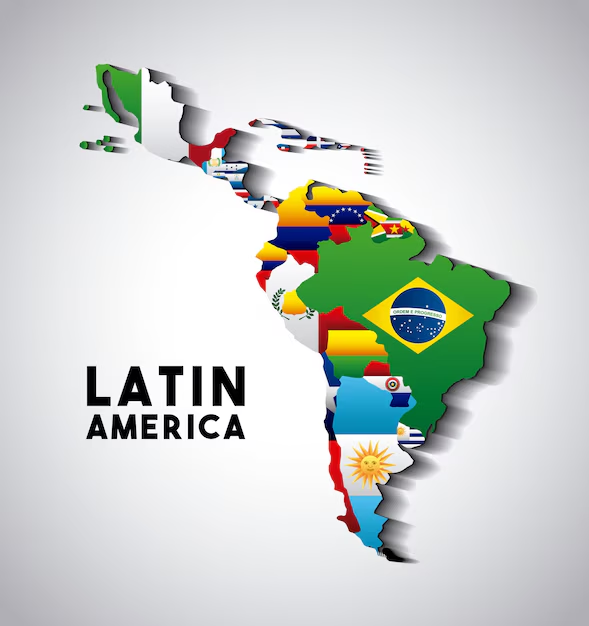Community-Based Disaster Resilience in the Americas: A Multifaceted Framework
The escalating frequency and severity of natural disasters across the Americas—encompassing hurricanes, wildfires, earthquakes, and floods—demand a transformative approach to disaster preparedness. This necessitates a paradigm shift towards robust, community-centric resilience strategies. This article proposes a comprehensive framework grounded in established social science theories, including Social Capital Theory, the Disaster Resilience Model, and Network Theory, to analyze contemporary challenges in community development and disaster management. The framework's application will be illustrated by examining successful resilience initiatives from North America, providing actionable insights for enhancing disaster preparedness across the hemisphere. The goal is to foster stronger, more unified communities and build a safer, more equitable future for the entire region.
Pillars of Community-Based Disaster Resilience: A Strategic Approach
Effective disaster preparedness transcends reactive measures; it necessitates a proactive, community-driven approach anchored in interconnected, mutually reinforcing pillars. The successful implementation of these principles is paramount to achieving sustainable community resilience. This necessitates a holistic approach integrating social, economic, and infrastructural elements.
1. Strengthening Social Capital: The Foundation of Collective Efficacy
Social Capital Theory posits that strong social networks and high levels of trust are crucial for collective action. In disaster contexts, robust social capital translates into enhanced collective efficacy—the shared belief in a community's capacity to respond effectively to crises. Empirical evidence demonstrates that communities with strong social bonds exhibit accelerated resource mobilization and mutual support during emergencies. Building social capital requires deliberate strategies: fostering community participation in local initiatives, promoting social interaction, and implementing trust-building exercises. This may involve community-led projects, social events, and initiatives that explicitly cultivate trust and cooperation.
2. Forging Collaborative Networks: Optimizing Emergency Response
Network Theory underscores the critical role of interconnectedness in efficient resource allocation and information dissemination. Applying this to disaster response involves establishing resilient networks comprising community members, non-governmental organizations (NGOs), the Red Cross, and governmental agencies. The effectiveness of these networks hinges on clear communication protocols, well-defined roles and responsibilities, and pre-negotiated agreements for resource sharing and mutual aid. This collaborative approach ensures efficient resource mobilization, improved coordination, and faster response times, thereby mitigating the impact of disasters. Regular simulations and drills are essential for refining these networks' responsiveness and preparedness.
3. Ensuring Inclusive Stakeholder Engagement: Equitable Disaster Preparedness
Meaningful engagement of all stakeholders—community leaders, diverse population groups, organizations, and government representatives—is crucial for developing equitable and effective strategies. A participatory approach ensures that the vulnerabilities of all community members, including marginalized groups, are addressed. Applying the principles of participatory action research, this inclusive planning ensures that disaster preparedness efforts are tailored to the specific needs and contexts of each community. This necessitates methods such as focus groups, community forums, and surveys to gather diverse perspectives and incorporate them into decision-making processes.
4. Risk Communication and Education: Empowering Communities Through Knowledge
Effective risk communication is paramount for fostering a culture of preparedness. Providing accessible, culturally appropriate information about potential hazards, emergency procedures, and available resources aligns with the "preparedness" phase of the Disaster Resilience Model. Educational initiatives must utilize diverse media channels—workshops, community events, digital platforms, and culturally relevant communication strategies—to reach all community members. This includes addressing potential communication barriers related to language, literacy, and accessibility.
5. Investing in Resilient Infrastructure: Protecting Lives and Assets
Resilient infrastructure— encompassing housing, transportation, and critical services—is essential for disaster mitigation. This aligns with the Disaster Resilience Model’s emphasis on infrastructure strengthening to withstand and recover from disasters efficiently. Building codes must incorporate disaster-resistant designs, while infrastructure investments should prioritize redundancy and adaptability. This ensures that essential services are less vulnerable to disruption. Investing in infrastructure that can withstand extreme weather events and natural hazards is paramount.
6. Leveraging Technological Advancements: Enhancing Early Warning and Response
Technological innovation significantly enhances disaster preparedness. Early warning systems, geographic information systems (GIS) for vulnerability mapping, and real-time communication platforms optimize resource allocation and response. This continuous improvement aspect of the Disaster Resilience Model highlights technology’s pivotal role in modern disaster preparedness. This includes investing in and maintaining updated technology infrastructure, as well as training personnel in its use.
7. Promoting Social Inclusion and Equity: Addressing Vulnerability Gaps
Socially cohesive and inclusive communities exhibit higher resilience. Addressing the vulnerabilities of marginalized groups—the elderly, disabled, and economically disadvantaged—is crucial. This necessitates targeted programs and resources to ensure equitable access to preparedness information and support services. A focus on social justice in disaster preparedness is essential for building truly resilient communities.
8. Strengthening Volunteerism and Community Engagement: Enhancing Collective Capacity
Volunteers play a vital role in disaster response and recovery. Fostering volunteerism strengthens community capacity through training programs, coordinated networks, and recognition of contributions. This enhances social capital and collective action during emergencies. Creating opportunities for volunteer participation, providing appropriate training, and recognizing their contributions are critical.
9. Continuous Improvement Through Post-Disaster Analysis: Learning from Experience
Analyzing past disasters, evaluating outcomes, and incorporating lessons learned into future strategies is critical for continuous improvement. This iterative process, inherent in the cyclical nature of the Disaster Resilience Model, informs future planning and preparedness efforts. Regular post-disaster assessments are essential for improving future responses.
10. Building Economic Resilience: Supporting Local Economies
Supporting local economies enhances community self-sufficiency and recovery capacity. Promoting sustainable economic practices, aiding local businesses, and providing economic relief programs during emergencies contribute significantly to community resilience. Supporting local businesses and promoting economic diversification can enhance recovery efforts.
11. Preserving Cultural Heritage: Strengthening Community Identity and Bonds
Cultural heritage is integral to community identity and resilience. Preserving traditions strengthens community bonds and fosters a sense of continuity during and after disasters. This strengthens social cohesion and aids community recovery. Incorporating cultural considerations into disaster preparedness plans is crucial.
12. Strengthening Early Warning Systems: Enhancing Preparedness and Response
Effective early warning systems are paramount for minimizing loss of life and property. Investment in advanced weather forecasting, seismic monitoring, and public alert systems is critical. This is a cornerstone of the Disaster Resilience Model, emphasizing proactive measures for disaster impact minimization. Regular testing and maintenance of these systems are essential.
13. Developing Leadership and Capacity Building: Empowering Individuals for Action
Developing strong leadership, providing comprehensive disaster management training, and equipping individuals with necessary knowledge and skills are essential for building community resilience. This empowers individuals to actively participate in preparedness efforts and strengthens collective action. Investing in leadership development and training programs is vital.
14. Regional and International Collaboration: Sharing Best Practices and Resources
Disasters often transcend national boundaries. Regional and international partnerships facilitate resource sharing, knowledge exchange, and mutual support during large-scale events. This collaborative approach significantly enhances global disaster preparedness capabilities. Establishing international collaborations and sharing best practices are critical steps in advancing community resilience.
Conclusion and Recommendations: Towards a More Resilient Future
Building resilient communities across the Americas necessitates a holistic, multi-faceted approach grounded in the principles discussed. This requires sustained commitment from governments, organizations, and communities. Recommendations include integrating disaster preparedness into national and local development plans; prioritizing investment in resilient infrastructure and early warning systems; fostering inclusive community engagement; and promoting ongoing education and training. Future research should focus on evaluating the effectiveness of various resilience-building strategies across diverse community contexts and exploring innovative technological solutions to improve preparedness and response capabilities. The long-term impact of these efforts will be stronger, safer, and more equitable communities capable of withstanding and recovering from future disasters. The applicability of this framework extends beyond the Americas, offering a valuable model for global disaster preparedness. A critical aspect of future research should involve a comparative analysis of successful resilience-building strategies across different regions and cultural contexts to identify best practices and refine the proposed framework.
Reader Pool: Considering the complex interplay of factors influencing community resilience, what innovative strategies might be employed to overcome the challenges of achieving widespread adoption of effective disaster preparedness plans across diverse communities in the Americas?





